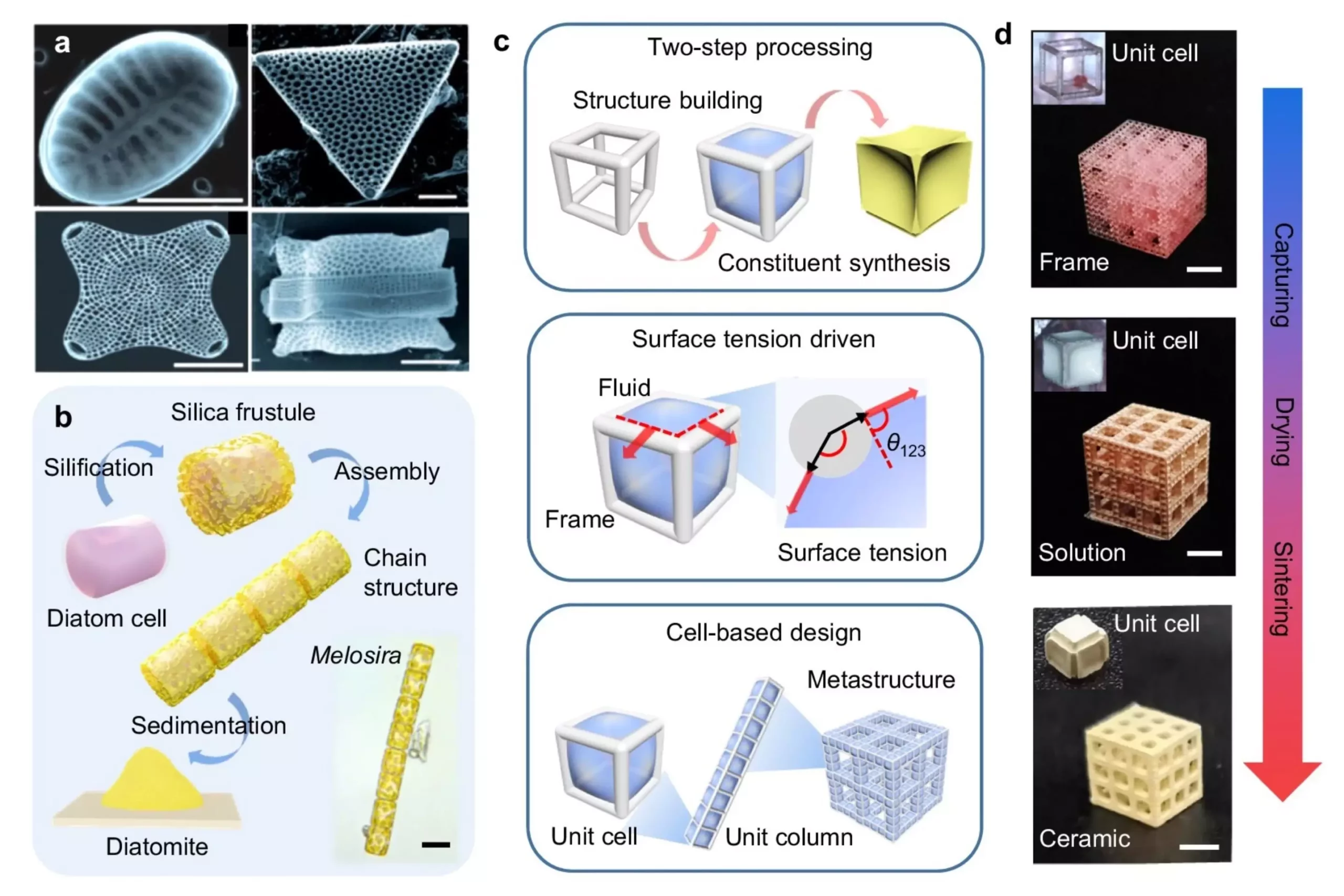The School of Engineering at the Hong Kong University of Science and Technology (HKUST) has made groundbreaking strides in the field of additive manufacturing with the development of a new method for producing geometrically complex cellular ceramics. This method, known as the Surface Tension-Driven Route Toward Programmed Cellular Ceramics, has the potential to transform the way ceramic materials are designed and processed, opening up a world of possibilities in energy, electronics, and biomedicine applications.
Led by Associate Professor Yang Zhengbao, the research team at HKUST devised a two-step processing strategy called STATS, which involves the preparation of cell-based organic lattices through additive manufacturing and the filling of precursor solutions to create intricate cellular structures. One of the key challenges faced by the team was controlling the liquid geometry, which they successfully overcame by leveraging the natural phenomenon of surface tension to capture and pin fluids in the desired lattice configurations.
One of the major advantages of the STATS approach is its ability to separate ingredient synthesis from architecture building, allowing for the programmable manufacturing of cellular ceramics with diverse sizes, densities, geometries, and constituent elements. This high level of programmability makes the method applicable to both structural and functional ceramics, such as Al2O3, TiO2, BiFeO3, and BaTiO3. Additionally, the method has been shown to improve the local compactness and decrease micropores in sintered cellular ceramics, leading to enhanced performance characteristics.
The inspiration behind the innovative method came from single-celled diatoms, algae that exhibit highly precise structures in their silica frustule, or external cell wall. Through a genetically programmed biomineralization process, diatoms are able to create intricate and varied morphologies, shapes, geometries, pore distributions, and assemblies. This natural process served as the inspiration for the development of the Surface Tension-Driven Route Toward Programmed Cellular Ceramics.
The new method has far-reaching implications for various industries, including the manufacturing of filters, sensors, actuators, robotics, battery electrodes, solar cells, and bactericidal devices. By enabling the creation of programmable, geometrically complex ceramic architectures, this approach has the potential to revolutionize the production of cellular ceramics and drive innovation in a wide range of fields.
The Surface Tension-Driven Route Toward Programmed Cellular Ceramics represents a significant advancement in additive manufacturing technology. By overcoming traditional limitations and unlocking a new level of programmability in ceramic material production, this method paves the way for exciting new developments in energy, electronics, and biomedicine. As researchers continue to explore and refine this groundbreaking approach, the possibilities for new applications and advancements in the field of cellular ceramics are truly limitless.



Leave a Reply